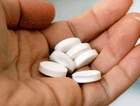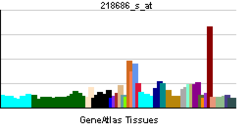Indication
SUTENT® (sunitinib malate) is indicated for the treatment of advanced renal cell carcinoma (RCC).
Important Safety Information
Hepatotoxicity
has been observed in clinical trials and post-marketing experience.
This hepatotoxicity may be severe, and deaths have been reported.
Monitor liver function tests before initiation of treatment, during
each cycle of treatment, and as clinically indicated. SUTENT should be
interrupted for Grade 3 or 4 drug-related hepatic adverse events and
discontinued if there is no resolution. Do not restart SUTENT if
patients subsequently experience severe changes in liver function tests
or have other signs and symptoms of liver failure.
Women of childbearing potential should be advised of the potential hazard to the fetus and to avoid becoming pregnant.
Given
the potential for serious adverse reactions (ARs) in nursing infants, a
decision should be made whether to discontinue nursing or SUTENT.
Cardiovascular
events, including heart failure, myocardial disorders, and
cardiomyopathy, some of which were fatal, have been reported. Monitor
patients for signs and symptoms of congestive heart failure (CHF) and,
in the presence of clinical manifestations, discontinuation is
recommended. Patients who presented with cardiac events, pulmonary
embolism, or cerebrovascular events within the previous 12 months were
excluded from clinical studies.
SUTENT
has been shown to prolong QT interval in a dose-dependent manner, which
may lead to an increased risk for ventricular arrhythmias including
torsades de pointes, which has been seen in <0.1% of patients.
Monitoring with on-treatment electrocardiograms and electrolytes should
be considered.
Hypertension
may occur. Monitor blood pressure and treat as needed with standard
antihypertensive therapy. In cases of severe hypertension, temporary
suspension of SUTENT is recommended until hypertension is controlled.
There
have been rare (<1%) nonfatal reports of subjects presenting with
seizures and radiological evidence of reversible posterior
leukoencephalopathy syndrome (RPLS).
Hemorrhagic
events, including tumor-related hemorrhage such as pulmonary
hemorrhage, have occurred. Some of these events were fatal. Perform
serial complete blood counts (CBCs) and physical examinations.
Osteonecrosis
of the jaw (ONJ) has been reported. Consider preventive dentistry prior
to treatment with SUTENT. If possible, avoid invasive dental
procedures, particularly in patients receiving bisphosphonates.
Cases
of tumor lysis syndrome (TLS) have been reported primarily in patients
with high tumor burden. Monitor these patients closely and treat as
clinically indicated.
Thyroid
dysfunction may occur. Monitor thyroid function in patients with signs
and/or symptoms of hypothyroidism or hyperthyroidism and treat per
standard medical practice.
Cases
of impaired wound healing have been reported. Temporary interruption of
therapy with SUTENT is recommended in patients undergoing major
surgical procedures.
Adrenal
hemorrhage was observed in animal studies. Monitor adrenal function in
case of stress such as surgery, trauma, or severe infection.
CBCs
with platelet count and serum chemistries including phosphate should be
performed at the beginning of each treatment cycle for patients
receiving treatment with SUTENT.
Dose adjustments are recommended when administered with CYP3A4 inhibitors or inducers.
The
most common ARs occurring in ≥20% of patients receiving SUTENT for
treatment-naïve metastatic RCC (all grades, vs IFNα) were diarrhea (66%
vs 21%), fatigue (62% vs 56%), nausea (58% vs 41%), anorexia (48% vs
42%), altered taste (47% vs 15%), mucositis/stomatitis (47% vs 5%), pain
in extremity/limb discomfort (40% vs 30%), vomiting (39% vs 17%),
bleeding, all sites (37% vs 10%), hypertension (34% vs 4%), dyspepsia
(34% vs 4%), arthralgia (30% vs 19%), abdominal pain (30% vs 12%), rash
(29% vs 11%), hand-foot syndrome (29% vs 1%), back pain (28% vs 14%),
cough (27% vs 14%), asthenia (26% vs 22%), dyspnea (26% vs 20%), skin
discoloration/yellow skin (25% vs 0%), peripheral edema (24% vs 5%),
headache (23% vs 19%), constipation (23% vs 14%), dry skin (23% vs 7%),
fever (22% vs 37%), and hair color changes (20% vs <1%). The most
common grade 3/4 ARs (occurring in ≥5% of patients with RCC receiving
SUTENT vs IFNα) were fatigue (15% vs 15%), hypertension (13% vs <1%),
asthenia (11% vs 6%), diarrhea (10% vs <1%), hand-foot syndrome (8%
vs 0%), dyspnea (6% vs 4%), nausea (6% vs 2%), back pain (5% vs 2%),
pain in extremity/limb discomfort (5% vs 2%), vomiting (5% vs 1%), and
abdominal pain (5% vs 1%).
The
most common grade 3/4 lab abnormalities (occurring in ≥5% of patients
with RCC receiving SUTENT vs IFNα) included lymphocytes (18% vs 26%),
lipase (18% vs 8%), neutrophils (17% vs 9%), uric acid (14% vs 8%),
platelets (9% vs 1%), hemoglobin (8% vs 5%), sodium decreased (8% vs
4%), leukocytes (8% vs 2%), glucose increased (6% vs 6%), phosphorus (6%
vs 6%), and amylase (6% vs 3%).







 25-residue
epitope (segment 1) from MIG6 binds to the distal surface of the C lobe
of the kinase domain. Biochemical and cell-based analyses confirm that
this interaction contributes to EGFR inhibition by blocking the
formation of the activating dimer interface.(ZANG ET AL!)
25-residue
epitope (segment 1) from MIG6 binds to the distal surface of the C lobe
of the kinase domain. Biochemical and cell-based analyses confirm that
this interaction contributes to EGFR inhibition by blocking the
formation of the activating dimer interface.(ZANG ET AL!)